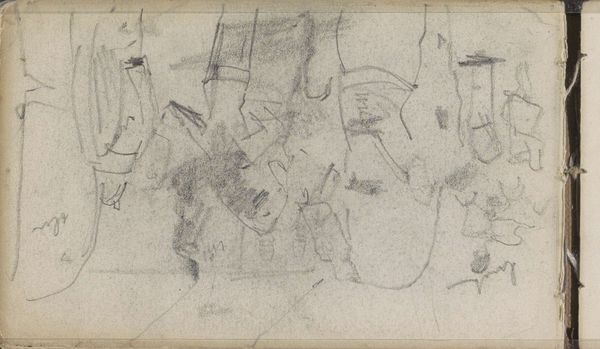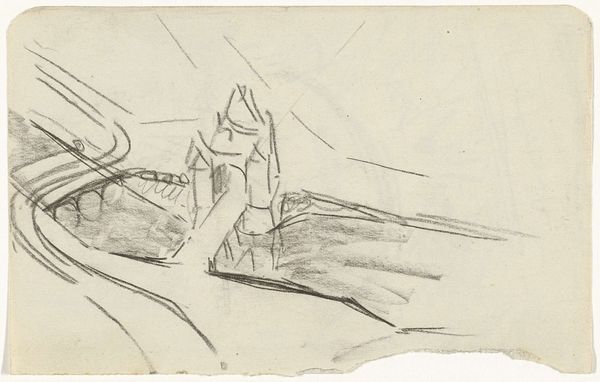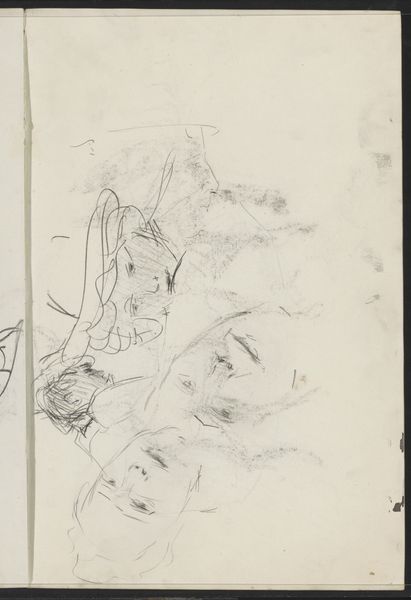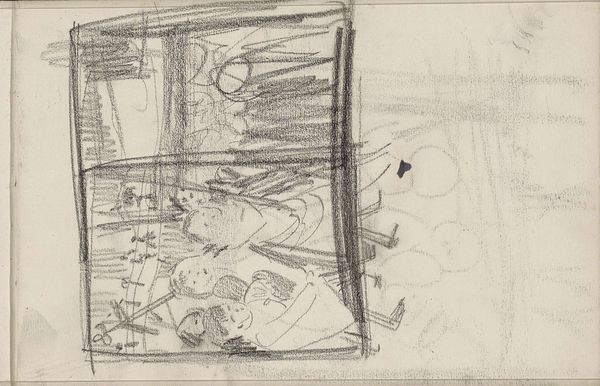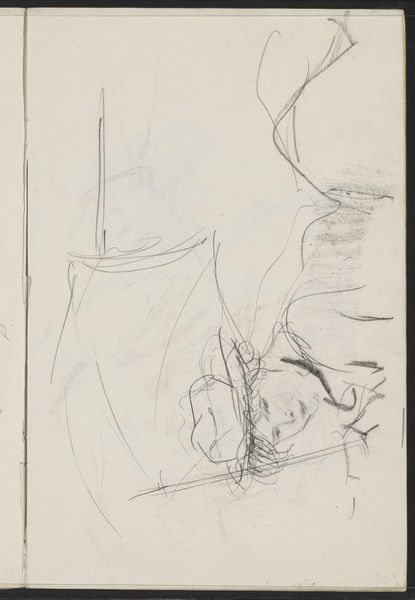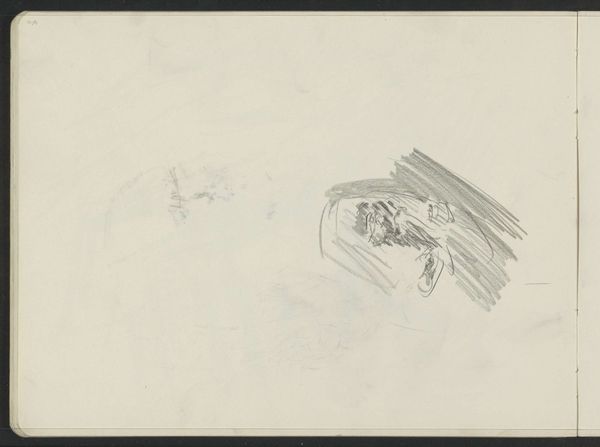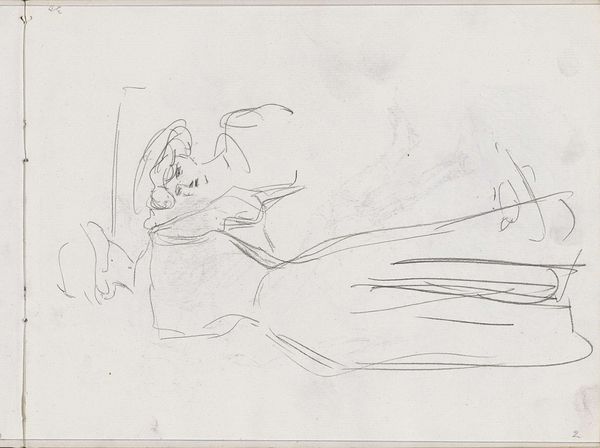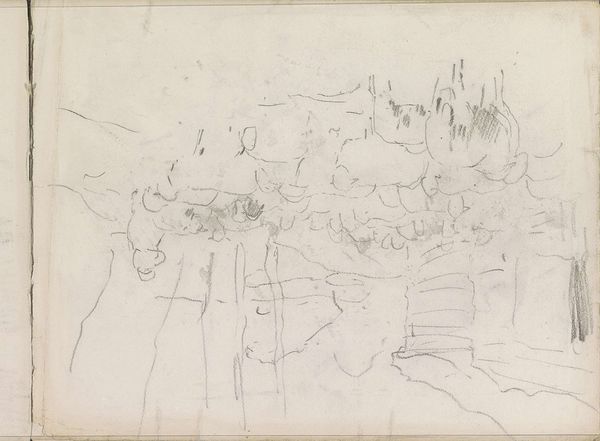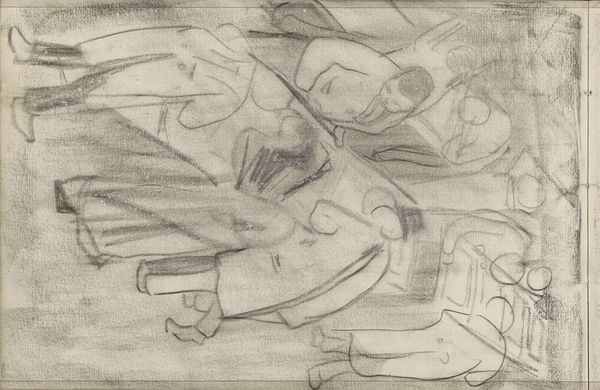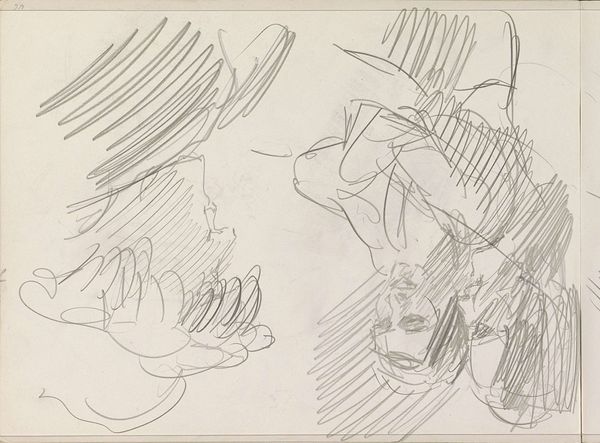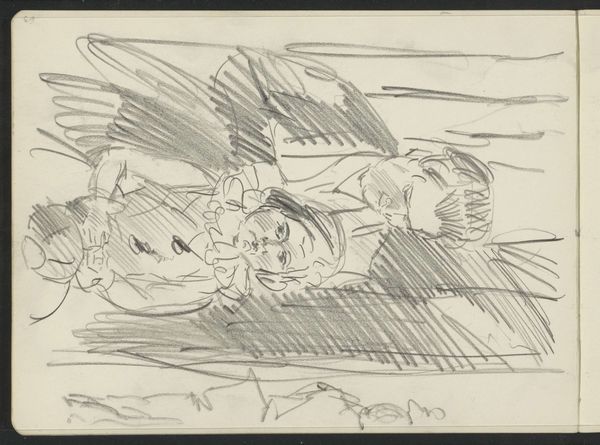
Studie van draperie; middel van staande figuur met de hand in de zij 1773 - 1843
0:00
0:00
drawing, paper, pencil
#
portrait
#
drawing
#
pencil sketch
#
figuration
#
paper
#
pencil
#
pencil work
#
academic-art
Dimensions: height 100 mm, width 128 mm
Copyright: Rijks Museum: Open Domain
Curator: I'd like to introduce you to "Studie van draperie; middel van staande figuur met de hand in de zij," a pencil drawing on paper, believed to have been created sometime between 1773 and 1843 by Georges Michel. Editor: It strikes me as a rather detached study, cool in tone. There's a certain vulnerability in the sketch-like quality, exposing the artistic process itself. Curator: Precisely. Consider the treatment of form—the way the light glances across the folds, delineating the volume of the figure beneath. Michel meticulously builds up tone through layered hatching, adhering to the academic principles he likely absorbed. Notice also the positioning of the hand. Editor: Yes, while admiring the technical skill, I find myself pondering the politics embedded in such exercises. The controlled posture, the implied restraint – whose gaze is shaping this figure, and for what purpose? The title refers to the drapery, perhaps implying attention to beauty over attention to the body it adorns. Curator: A fair point, but it could equally be argued that the drapery, in its arrangement and fall, amplifies the inherent structure. See how it both reveals and conceals, playing with the viewer's perception. I think Michel sought a harmony between form and the potential for expression within. Editor: But the potential for expression is always mediated by power dynamics! This drawing wasn’t created in a vacuum. The figure is presented in a deliberately unassuming pose. How might a contemporary artist engage with similar forms, challenging conventions around gender and the clothed body? Curator: We could debate influence endlessly, I think the genius of such academic works lies in their disciplined approach to visualizing three-dimensionality on a two-dimensional surface. To look at it, to copy from it, is to begin to engage with problems inherent in the tradition of art making, such as line, perspective, etc. Editor: But let’s not ignore the crucial conversation it sparks about art as an instrument of social norms. Considering that Georges Michel’s dates coincide with both the enlightenment and the era of revolution, this kind of work can provide interesting clues to understanding both art’s place and role within the history and trajectory of western ideals. Curator: An important consideration indeed. Editor: Absolutely. Thanks for that dive into technique and potential for reading.
Comments
No comments
Be the first to comment and join the conversation on the ultimate creative platform.
